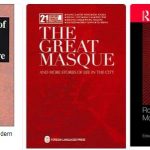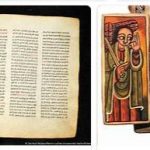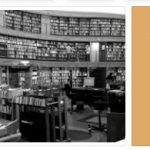The four hundred years that pass from the middle of the century. The fourteenth to the mid-eighteenth century, the centuries of the Renaissance, were a period of tiring labor for literary Germany, at the end of which an admirable new flowering was to reward it in a short time for the long wait. In the Renaissance, in the epoch of its European flourishing, German literature did not originally participate. When it seemed that it too, following the common example, was renewed in the humanistic spirit, the religious and national ferments, which first prepared the Reformation, the Protestant schism with all its spiritual and political disturbances, then paralyzed it, forced it to take a longer road, putting it at school or at the mercy of literatures that have already reached maturity – in addition to Italian, Spanish, French, English and Dutch -, to finally let them find their autonomy again through a national protest movement. However, in this long eve there is no lack of continuity of efforts and notable figures and works. Indeed, the process of disintegration of the Middle Ages completed in the sixteenth century, the new national organization already established itself in the Baroque with an artistic form that recent studies teach to appreciate more equally than in the past. But, even if one does not want to consider it simply as the German variant of a general European phenomenon, that art soon waned, and very different elements caused the great lyrical outbreak of the eighteenth century, when German literature spoke a new word to the world. The greatness of Germany in this period of preparation is in its spiritual history, history of which religious sentiment is so much a part. After the Counter-Reformation, the new literature will be largely the work of Protestants.
In Germany too the Middle Ages ended popular and bourgeois, but its decline was very slow, lasting until the sixteenth century. The new commercial and artisan ruling class, which arose in the free cities, is with its rationalistic and utilitarian spirits very different from that of the previous era, however it exploited for centuries the literary heritage of chivalry. He exploits it by lowering it to his own level, bending it to his own needs, mutilating and deforming it, so much so that he consumed it when the rise of absolute principalities condemned the bourgeoisie to a long mediocrity, during which a new literature of learned origin began. For a large part the literary history of the fourteenth-sixteenth centuries is reduced to following the process of wearing down the poetry of the courtly and chivalrous Middle Ages. In the Middle Ages, however, the people were also literally active, and religion was also a great inspirer of poetry. And both make themselves felt in the new time.
It is known that a long mystical fermentation precedes the Reformation. Germany had already had in its convents and beguinages a large group of eloquent mystics (Mechtild von Magdeburg, etc.), when, a contemporary of Dante, Meister Eckhardt, the greatest spirit, arose to preach and teach the way of indentation. speculative of Germanic mysticism. The condemnation of his doctrine did not prevent the ever increasing development of mystical literature. Enrico Suso and Giovanni Tauler expose in treatises, sermons, letters, not a closed system, but thoughts and senses that will enrich countless literary works. More lyrical, Suso dictates a Life, which presents with plastic vividness the model of a seraphic ascent to heaven. More practical, Tauler, in the forms of a popular theology and with absolute understanding of human limitations and social needs, is the propagandist of Christian interiority. Simultaneously and after them many others, men and women, ecclesiastics and seculars, in Latin and German, speculate on the manner of adhaerendo Deo (title of a book by Johan von Kastl) or as the merchant Rulmann Merswin, poet of a mysterious friend of God who acquires a host of faithful, or otherwise still verse, compile, vulgarize the complex mystical tradition. Around 1400 the clearest summary, within the limits of the Taulerian interpretation, is obtained by an anonymous person from Frankfurt with a small book ” Theologia deutsch), whose rediscovery and publication by Luther in 1516 ensured greater popularity. A certain weariness in mystical literature is evident at the end of the century. XIV, but the XV brings a revival that is also manifested in the greatest speculative spirit of the time, the cardinal of Cusa. Mystical elements are active in early German humanism, so much so as to constitute a differential characteristic from Italian humanism; they continue to act within the Reformation, of which they feed the opposition; they influence, in addition to religious life, philosophical speculation and even profane poetry up to the century. XVIII.
If mysticism thus seems to prolong the Middle Ages into modern times, the same is not true of the chivalric poem and Minnesang. One is no longer capable of a true original production in the chivalric poem, one is happy to repeat, to re-elaborate, as the legends of the national epic are repeated. These are dear to the people, while in the princes’ courts preference is given to the Carolingian tales and even more to the Bretons. There are those who, in the right feeling of having to deal with a past that is now closed, set out to collect manuscripts of old poems and celebrate them in rhyme (like Jakob Püterich); and there are those who accept from a prince the task of recounting concisely in an enormous poetic sum the content of the most famous chivalrous novels,by Ulrico Füterer). However, it is now with a retrospective interest that one looks at that distant world; it took a romantic emperor to believe he could relive it. Maximilian I, “the last knight”, idealizes the story of his marriage in a poem (Teuerdank) and the story of his own life and exploits in a prose fiction novel, the Weisskunig, but using allegory to try to achieve that meaning that no longer arose spontaneously. In the century XVI the chivalrous novel does not completely cease, but, dissolved in prose, reduced, altered, it decays to a simple mass of imaginative matter, which then merging with other subjects of various origins increases the vast anonymous literature of the Volksbücher, delight of the common people for centuries. A Boiardo and Ariosto to German poetry, which Hartmann and Goffredo and Wolfram had already had, were not granted. Instead, he had someone who can make one think in some respects of the Pulci in the Swiss Heinrich von Wittenweiler, the author of that Ring who, in order to teach the rules of beautiful and honest living, raises a sparkling heroic-comic poem on the plot of a grotesque peasant wedding story. of fantastic humor, ironic and bizarre, without example in fifteenth-century Germany.
The Ring is truly attached to the tradition of the chivalric poem only for the desire to satirize the craving for distinction of certain peasants or even simply to laugh at it with the taste already dear to Neidhart von Reuental, and recalls the transformation to which Minnesang also underwent. The favor which this had enjoyed in the feudal era still persisted: to the love that the 14th-15th centuries brought to it we owe the collections of the great Minnesänger precedents that have come down to us. But the late fourteenth century gives just a couple of knights poets worthy of the great tradition: Hugo von Montfort and the highly original South Tyrolean Oswald von Wolkenstein. Realism already breaks the rigid contours of courteous singing. On the one hand, the traditional lyric form is used for the representation of some amorous or even dramatic event; on the other hand, as the distinction between Lied and Spruch disappears, the tendency towards reflection, teaching and allegory is accentuated. The narrative and dramatic character of the last Minnesang brings it closer to popular poetry, to which in fact it brings a conspicuous legacy of motifs and materials. In the Volkslied, which assumes its typical forms between the century. XIV and XVI, it is the freshest lyrical flowering of Germany in the epoch of its greatest fantastic dryness. It is a constantly growing treasure, to which a crowd of unknown poets of every condition contributes from all over the nation, and it remains for all time the most spontaneous expression of the Germanic singing soul. Re-evaluated by Herder and Goethe, lovingly collected from the lips of the people, the old Volkslied will help to rejuvenate the poetry of the Stürmer und Dränger and the romantics. Thus this middle age product links the beginnings of German poetry with modernity.
The same cannot be said of the other epigone of Minnesang, the Meistergesang, which would like to be the genuine continuation of the troubadour poetry, but as understood by the petty-bourgeois spirit of the new city poets. Born in the church – in the 14th century, it seems at first in Mainz – it remains forever theologically colored; loyal to the Spruch tradition, is always burdened with moralism and didacticism, made even heavier by the taste of allegory; raised in respect of the art learned from the venerated canons, he closes himself in the laws of tabulation, stiffening himself in a conventionalism of materials, forms, poetic and musical motifs, language. Only in the songs of the tavern does the play of painfully calibrated rhymes open up to a bit of festivity. However, such a literary game had to respond to the tastes of that artisan class which held so much place in the new city civilization, since the schools of the master singers prospered in many cities, and it took almost a century before a reformer was born in the barber Hans Folz. Nuremberg opened its doors to him, imitated by all the other schools: the principle, as opposed to the traditional one, applied that only those who invented a new way could be called a teacher. Other reforms followed in the century. XVI, also in the metric field, especially through the work of the most distinguished god Meistersänger, Hans Sachs. Historical, contemporary and amorous subjects were sung; and at the tavern the Decameron and the Eulenspiegel were also placed on the Procrustean bed of the strophic triads. But the new liberal attempts of the early seventeenth century met with more decisive resistance; it lacked the strong personality to break them; the Meistergesang once again became the Sunday academy for semi-educated craftsmen it had been in the beginning and drew, here and there until the nineteenth century, the life of a curious old man.
A characteristic form of the German literary fourteenth and sixteenth centuries is the Meistergesang both for his tenacious and narrow devotion to the poetic Middle Ages, and for his prosaic doctrinalism and moralism. There is little room for fantasy in these centuries. We continue to read novels, but translated, the new ones, from French, and short stories, but more willingly the short and fat ones, the jokes. In the era of great discoveries, one can read travel stories (including those of Marco Polo and A. Vespucci), but at least as willingly, the various remakes of ancient fables. As everything tends towards the typical, every invention is used for a practical purpose, for the satire of morals or for moral training, and submits itself docile to the yoke of allegory. The vivacity of temperament and the art of the writer rarely manage to somewhat dominate the matter and intention, as happens in the Lübeck remake of the Reinke de Vos, in S. Brant’s Narrenschiff, in the satirical writings of T. Murner and later, in the works of Hans Sachs.
According to thembaprograms.com, the medieval religious drama has no different development in Germany than elsewhere. In our age he has already left the church, he tries himself with various subjects, biblical and legendary, he is enriched with the realism and comedy that liked at the time. Characteristics are the predilection and breadth given to the Passions. Many of those texts are now being drafted which, transformed especially in the Baroque age, will remain up to the present day (Oberammergau). Alongside the religious there is the profane drama, which not even in Germany manages to create a great national theater, remaining firm to morality or farces, without ever exceeding the level of popular entertainment. The Fastnachtspiel enjoys much favor, born from masquerades and carnival processions and raised to an episodic review, with typical characters, of human defects and weaknesses through caricatural sketches and humorous satire. Here too are the work of the Meistersänger, Hans Folz and, above all eminent, Hans Sachs. All this literature, of medieval origin and bourgeois, realistic and everyday intonation, which makes use of a language, despite its popular, schematic and conventional color, is consumed in the course of the century. XVI without the possibility of an artistic future.









